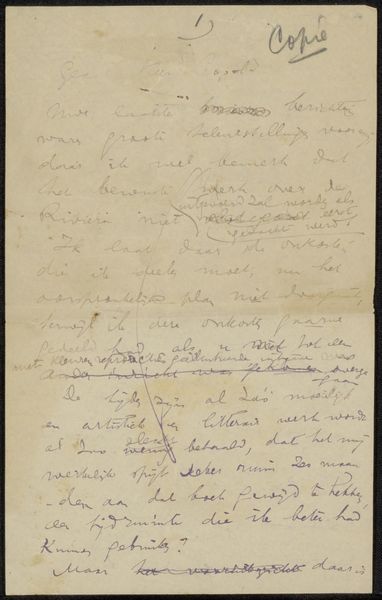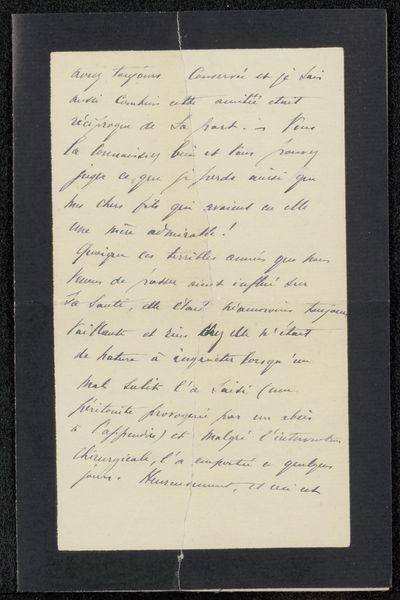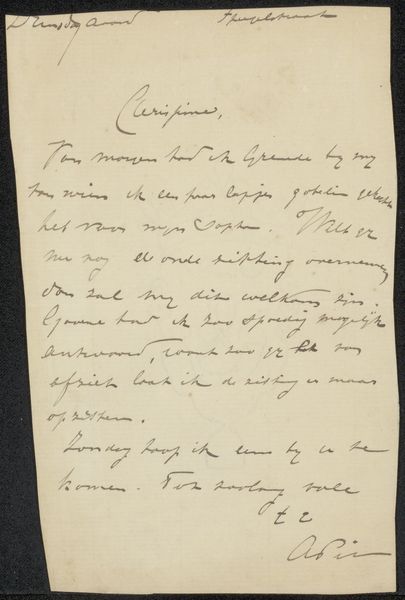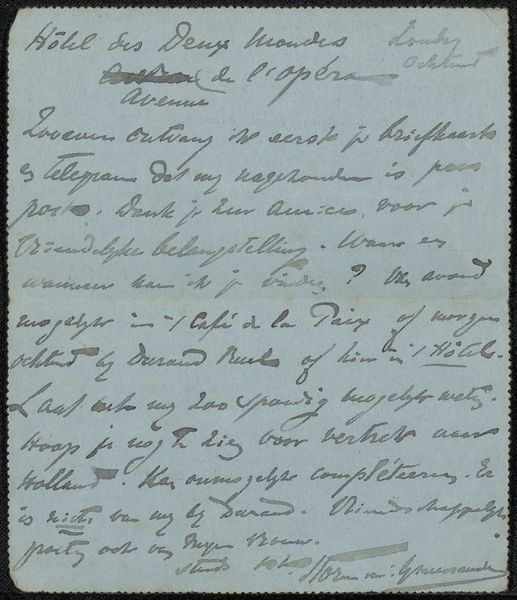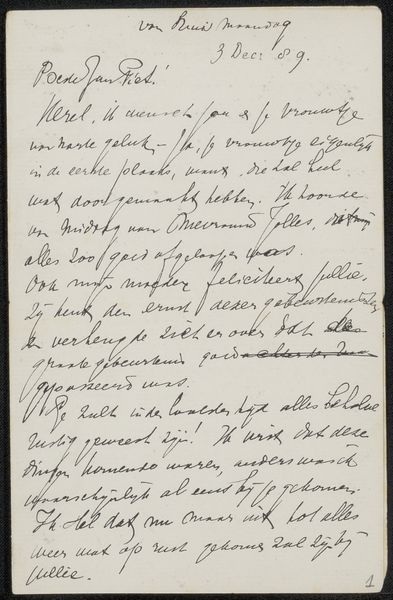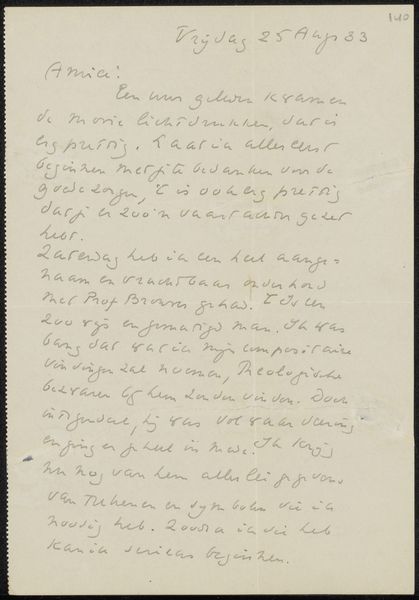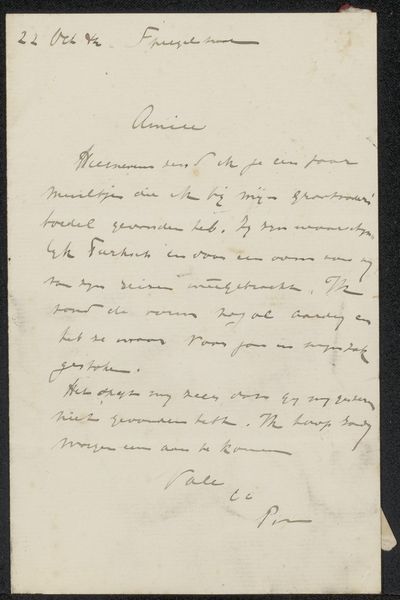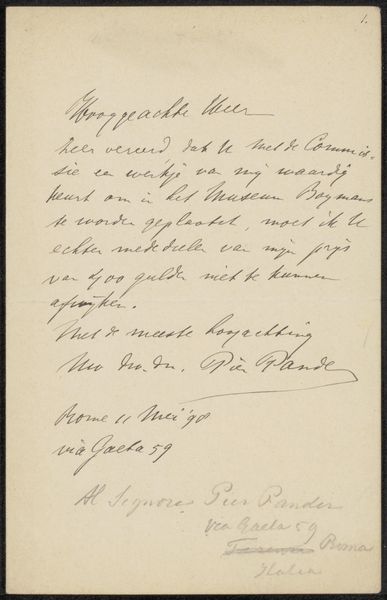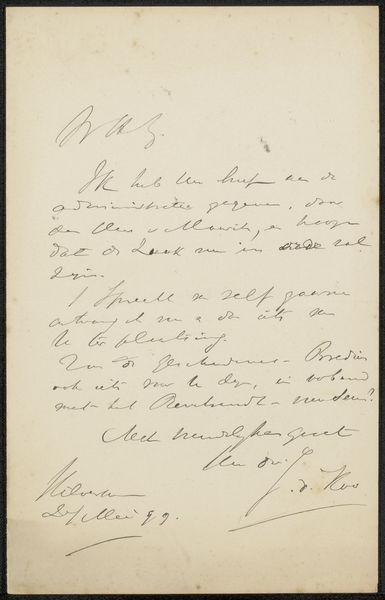
drawing, paper, ink, pen
#
drawing
#
paper
#
ink
#
intimism
#
pen
Copyright: Rijks Museum: Open Domain
Curator: Today, we're looking at a work titled "Transcriptie van een brief aan Philip Zilcken" – that’s "Transcription of a Letter to Philip Zilcken" – likely composed after 1894. The artist is not indicated, but the document itself provides the name of the letter writer: Camille Lemonnier. Editor: It looks incredibly intimate. The slanted, cursive script gives the impression of a hastily written personal message, almost whispered across time. It gives insight into artistic labor through the material act of letter writing and subsequent transcription. Curator: Precisely. The artwork is constructed from ink on paper and involves penmanship to transfer information—which moves us beyond the traditional high art sphere to more of the everyday realities of the time period. This material connection provides a look into social connections and intimate networks between writers of the era. Editor: And Camille Lemonnier himself plays an important role in understanding those contexts, wouldn't you say? A writer with anarchist leanings, writing here to Zilcken, who himself was a portraitist and printmaker. How are these socio-political leanings being made clear to a 21st-century viewing audience, or being omitted from the narrative of the museum’s display of this artifact? The act of archiving this correspondence, in turn, speaks to its intended purpose—to preserve a trace of the thoughts, ideas, and struggles circulating amongst the late-19th century intelligentsia. Curator: Good point, those choices highlight specific aspects and create a narrative through selection and exclusion. Also consider the level of access involved. This transcript, rendered permanent as an object, has allowed the museum-going public the option to delve into what might have been a closed communication circuit. Editor: But what are the socio-political considerations when the artist’s name is excluded from the title of this work? I find myself questioning if it perpetuates a dynamic where the writer is foregrounded while obscuring Zilcken as the artist of transcription, the individual doing this delicate material labor by their hand. Curator: You’re right. Those details become quite important when approaching this kind of work through Zilcken’s lens and material practices. By delving into how the transcription work impacts labor analysis, our reading opens outward, emphasizing not just intimacy but also the structures upholding these social interactions, wouldn't you agree? Editor: I agree. Highlighting Zilcken through transcription emphasizes its potential for challenging societal roles around art production; now I also start to think of questions of transcription or appropriation related to identity. Thank you, that’s really given me something to think about! Curator: Likewise! Approaching from Lemonnier’s role of writer and thinker, the historical context highlights a wealth of information beyond these letters; an important takeaway from viewing work like this.
Comments
No comments
Be the first to comment and join the conversation on the ultimate creative platform.
